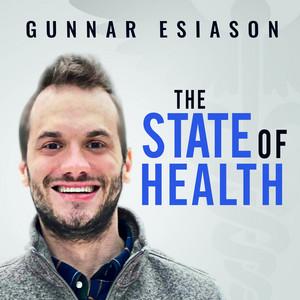In-depth interviews (IDIs)
What are IDIs used for? In-depth interviews are used to get behavioral or attitudinal data, directly from the people you’re interested in building solutions for. Interviews provide you with rich, contextual data that helps to create a holistic picture of a patient's experiences, sentiments, and opinions. In-depth interviews can be used to capture thoughts and feelings in a way quantitative methods simply can’t.
When should I use IDIs? In-depth interviews can be used at any point in the solution development process. Use cases include understanding unmet needs in a patient population when you’re just starting out, uncovering attitudes about current offerings on the market (or your own!), and identifying barriers in your service or solution design.
If you’ve already put a solution in the market and usage analytics are signalling an issue or some interesting outliers, an IDI is a great way to get at the why to investigate why something is happening and potentially how to fix it.
IDIs are also helpful when you have a fully developed concept and want a quick temperature check with your target population before you go to market. You never know what you might find if you just take an extra second to ask a few patients what they think!
Focus groups / Roundtables / Advisory boards (Live group discussions)
What are live group discussions used for? We have found our clients use these terms—focus groups, roundtables, and advisory boards— interchangeably. At their core, they are live discussions with multiple participants.
Focus groups are traditionally used by marketing and advertising leaders to expose products to their target audience and evaluate their opinions. In practice, we see many use these live group discussions in many of the same use cases as IDIs, it’s just in a group format instead of one-on-one. There are various factors to consider when deciding between IDIs and group discussions.
When should I use live group discussions? Many like to use live group discussions because they like the dynamic of group interaction. But with any group interactions, there can be some pitfalls to look out for. These include the bias that is introduced as soon as someone shares something with the group, the dynamic that happens when one or two people dominate the conversation, and of course the challenge of coordinating availability (spoiler: this can be especially challenging if you want diverse representation).
Generally, we find that other modalities can facilitate group interactions (see the discussion and activity boards) without the downsides. That said, there is the benefit that live group discussions can be quick, efficient ways to collect insights since they are one and done. Just be cognizant of their limitations.
Concept testing
What are concept tests used for? It is often ideal to have done some patient insights collection before you come up with a concept in the first place, but whatever landed you at this juncture where you are in the planning phase of an idea, solution, or campaign, concept testing can be quite helpful! This allows you to get feedback before you commit resources to building out the solution.
If your research questions fall along the attitudinal side of the spectrum, i.e. you’re interested in why patients think something, or how your potential solution is perceived, then you’re looking at a great fit for concept testing.
When should I use concept testing? Concept testing is used for a variety of ideas. It could be wireframes or prototype mockups for an app or website, it might be storyboards of an educational video, it could be creative options being considered for a marketing campaign. In these and other use cases, it’s great to get patient input before you start to program or develop the concept out. Concept testing is also best when done iteratively—meaning after you get the initial feedback, refine your ideas and come back for more!
Discussion and activity boards
What are discussion and activity boards used for? You may be less acquainted with discussion and activity boards, but they can be used for all of the above use cases. Many people are familiar with the concept of discussion boards or online forums, but it gets better! At Savvy, our activity boards allow for not only dynamic discussions, but activities such as survey type questions (e.g. multiple choice, Likert scales, open fields), marking up creative concepts or reviewing wireframes similar to concept testing, uploading multimedia files (e.g. photos or videos), online diaries, card sorting exercises, and more!
The beauty of these types of online boards are that they can facilitate conversation while limiting bias. The methodology that Savvy usually uses is where participants are blinded to the other participants’ responses until after they have submitted their own for that particular activity. After they have submitted their responses, they can see what others have shared, and build upon them by commenting and creating rich dialogues amongst each other. Furthermore, moderators can follow up with probing questions to follow the thread like they would in IDIs, all while having that interactive feel of a focus group.
When should I use discussion or activity boards? Since these online boards are asynchronous, meaning the participants don’t all need to log on at the exact same time, it allows for larger sample sizes across geographies and time zones. This modality can also allow for more inclusive participation as people are able to log on on their own time, which affords them the opportunity to participate even if they are juggling work, school, personal or family responsibilities.
Savvy frequently uses activity boards to help clients get efficient, interactive, and robust insights. We use this modality either in quick concept tests, or in-depth asynchronous workshops that utilize numerous activity boards over the course of a week.
You don’t have to pick just one!
The key to remember is you don’t have to pick just a single methodology for your work. The whole point is to gather input, learn from it, and deploy another round of insights collection. Sometimes this may be spaced out between projects, and sometimes a project may be scoped using a mixed methods, multiphased approach from the start.
Savvy frequently uses a methodology of IDIs + asynchronous activity boards + IDIs, which allows us to test the research questions, deploy them to a larger sample, and then follow up with any new or lingering questions. There’s always more to ask, and in later posts, we’ll teach you how.
Zoom in on In-Depth Interviews
Let’s walk through an example of how we might select an appropriate methodology. Recall in the last installment that we ended up with this set of research questions for our hypothetical digital therapeutics (DTx) product manager working in type 2 diabetes (T2D):
- Unmet needs of T2D patients in general
- What challenges to T2D patients in our target population face at home, both specific to accessing our product, and in general?
- What are the potential financial challenges to accessing our DTx in this population?
- How have T2D patients been managing these challenges without pharmacological intervention in the past?
- Age 65+ population
- Assuming that we can address hurdles to financial access for this population through Medicare, what usability and accessibility challenges might they face?
- Those with comorbidities that can present challenges with our mobile interface, e.g. macular degeneration, glaucoma
- What do users with different visual abilities experience when they interact with specific user flows of our DTx?
- What accessibility initiatives, if any, should we prioritize in patients who have vision loss?
If we squint at this set of questions, some words stand out. Whats and Hows predominate our team's concerns, much more so than how much and how many. This is a signal that we’re leaning toward the qualitative so far.
Looking at the bent of some of the questions, we can also notice a lot of behavioral questions - things like how have patients done x in the past, and what do they do when they do y.
The combination of behavioral + qualitative makes an IDI a great potential approach. That way you get to observe how things are done in the environment of the patient over a video call, and you may do some moderated user experience testing while you are there if you wish to show the participant some mockups of your DTx prototype.
If your research questions start to trend in the direction of what and why, an IDI is still a great solution, as you can explore attitudinal questions in a remote or in-person setting. You can unearth potential roadblocks that simply wouldn’t come up in a survey, and you can follow the thread as you probe deeper in real time into the things participants share across their varying social and environmental contexts.
Remember, patient engagement should be treated as a verb, not a noun, meaning you are never done asking patients! After you collect your insights, it's time to take them back to your team and iterate on your idea. Then it’s time to get more feedback, and then with the other methods we laid out above, you can choose how to assess and what to do next.
Thanks for reading - next time we’ll show you how to turn your research questions into a discussion guide, how best to frame your questions when you ask patients, and also share some common pitfalls to avoid.
Till next time!
About Us
Jahed Momand is VP of Product & Marketing at Savvy Cooperative, and previously led patient-focused research groups at digital health startups such as Conversa Health and ZoomCare.
Savvy Cooperative helps the healthcare industry create patient-centered products and solutions by providing a marketplace for patient insights. Pharma and startups alike can connect directly with patients to participate in clinical, UX, and market research. Savvy’s unique co-op model leverages its members’ networks to quickly recruit diverse patients, and pays patients for sharing their insights! Savvy’s award-winning co-op has been featured in FastCompany, TechCrunch, The Boston Globe, and named one of the 50 Most Daring Entrepreneurs by Entrepreneur Magazine.
.png?width=300&height=69&name=SavvyCoop_HorizontalLogo_LargeFormat%20(1).png)


